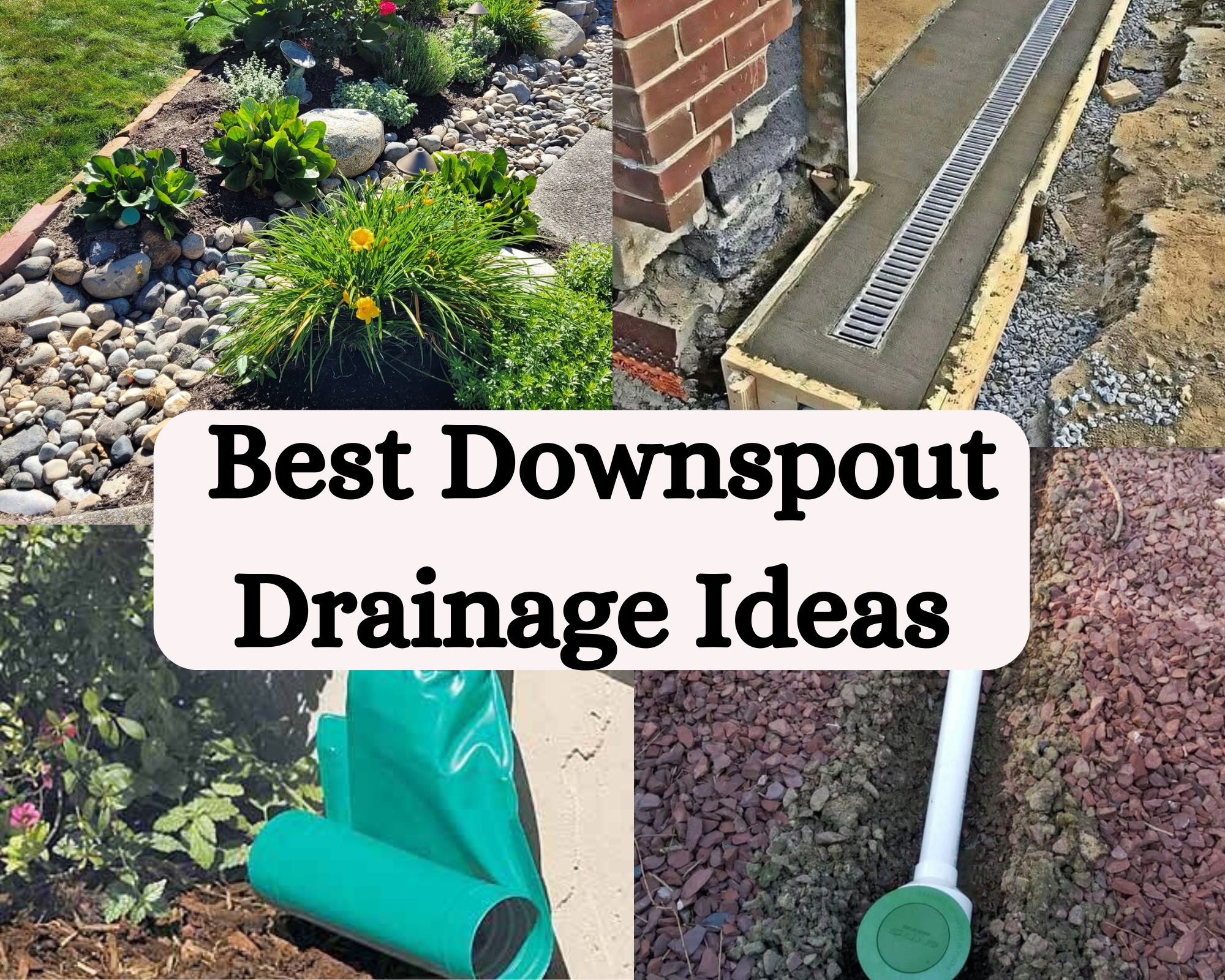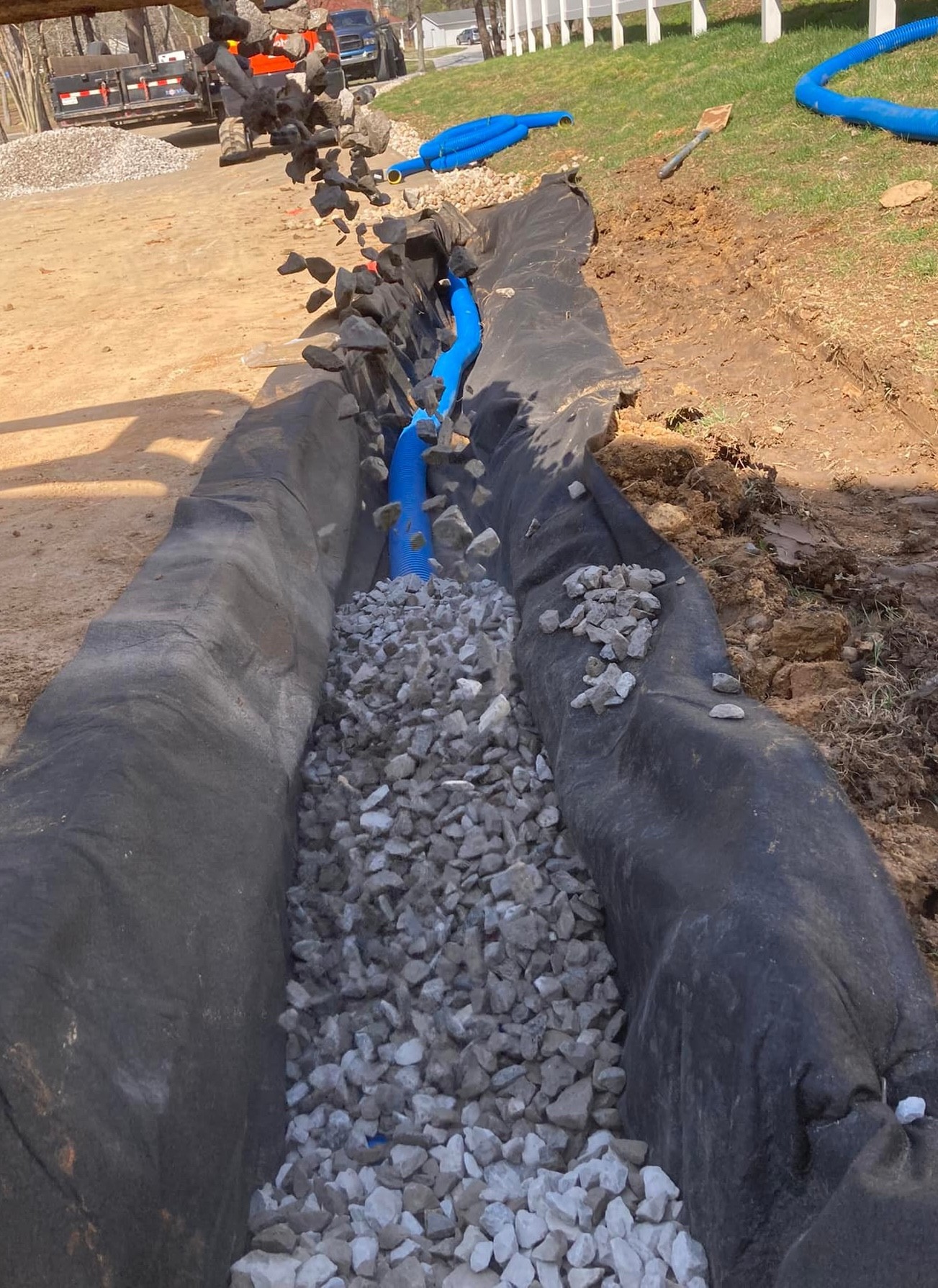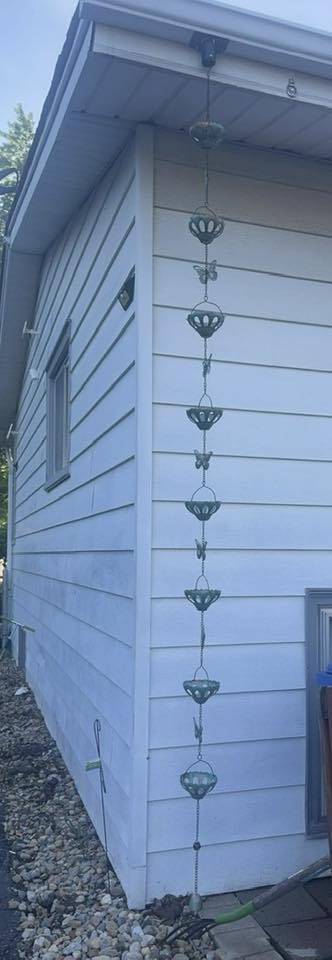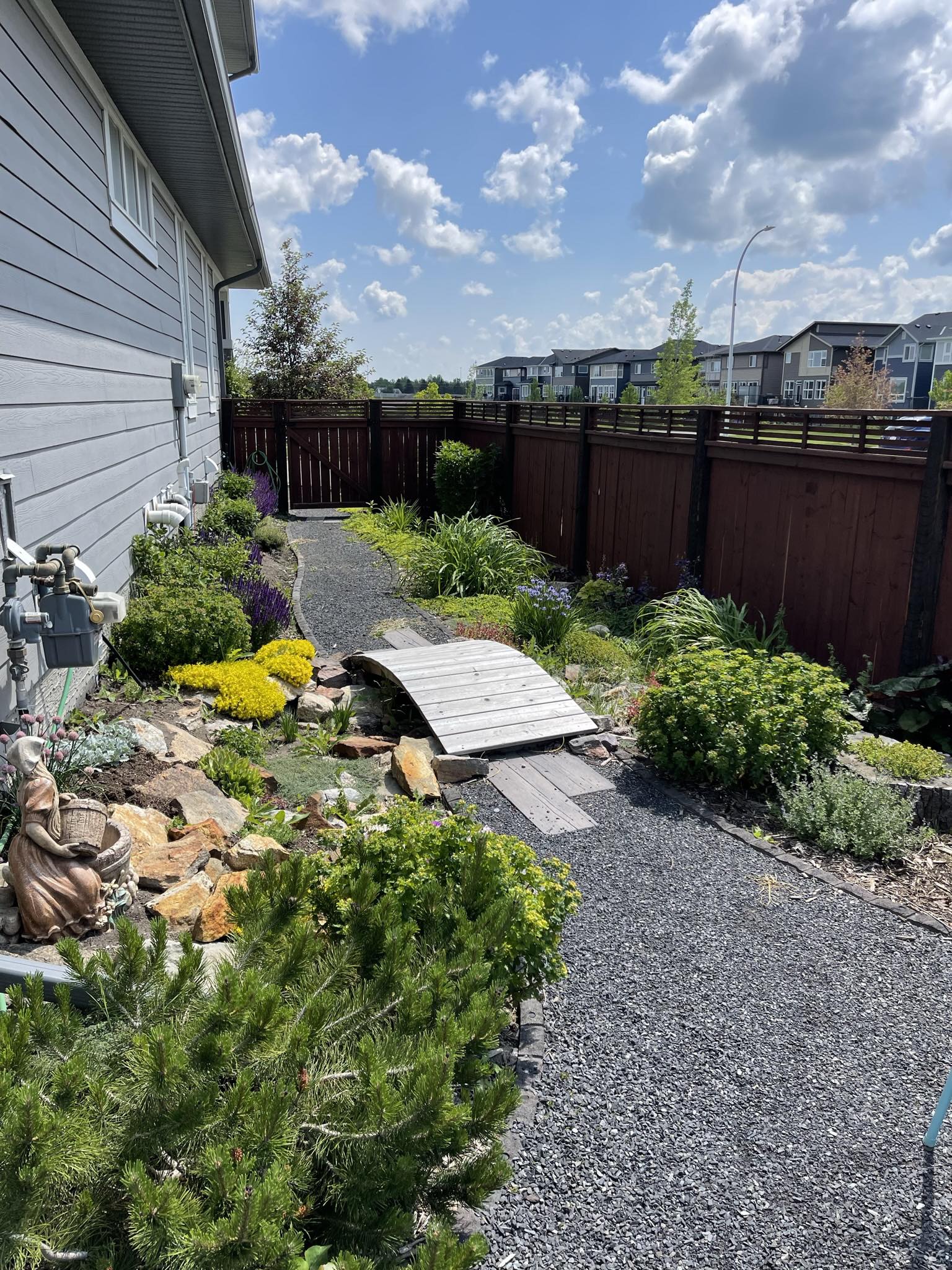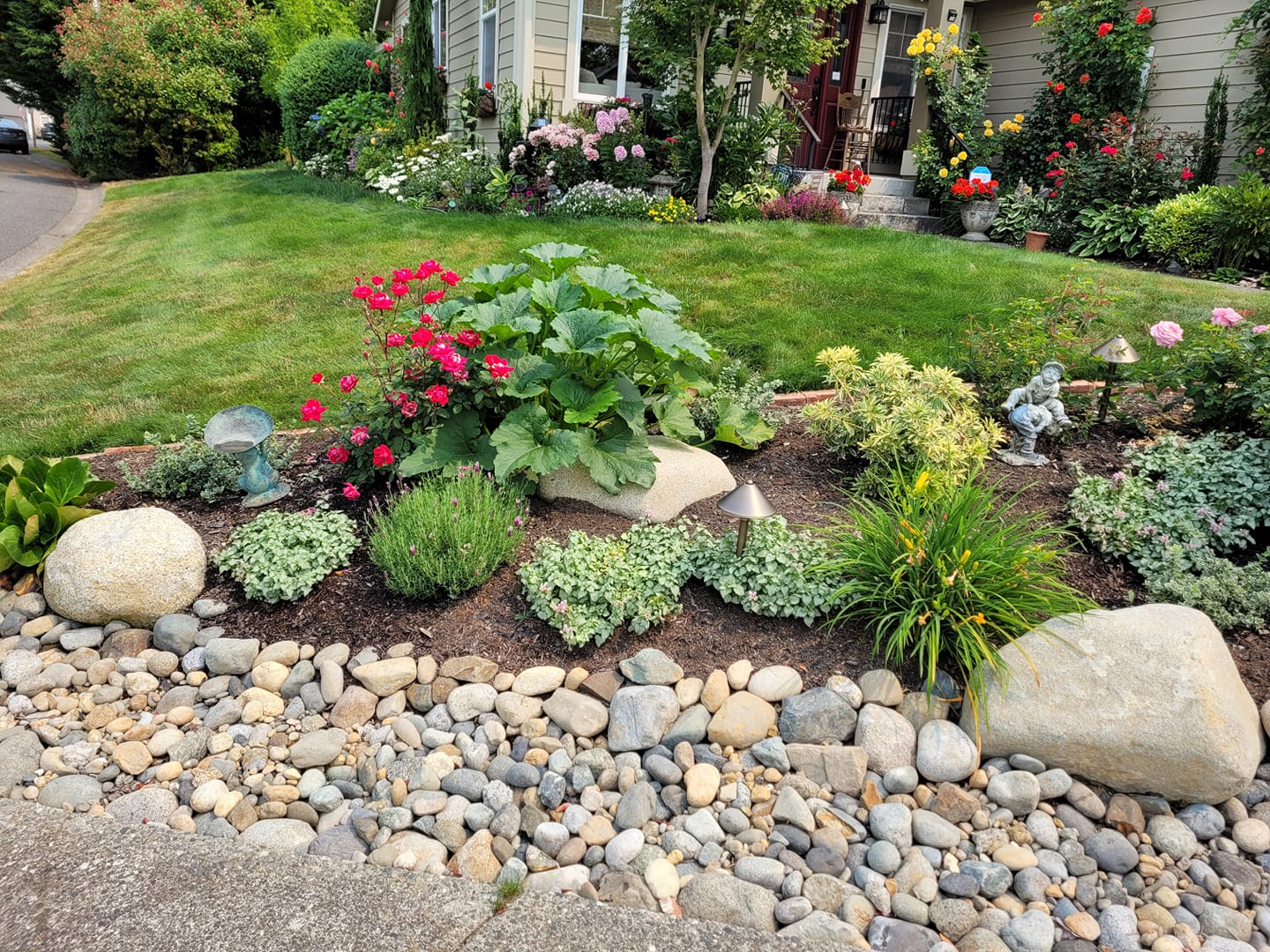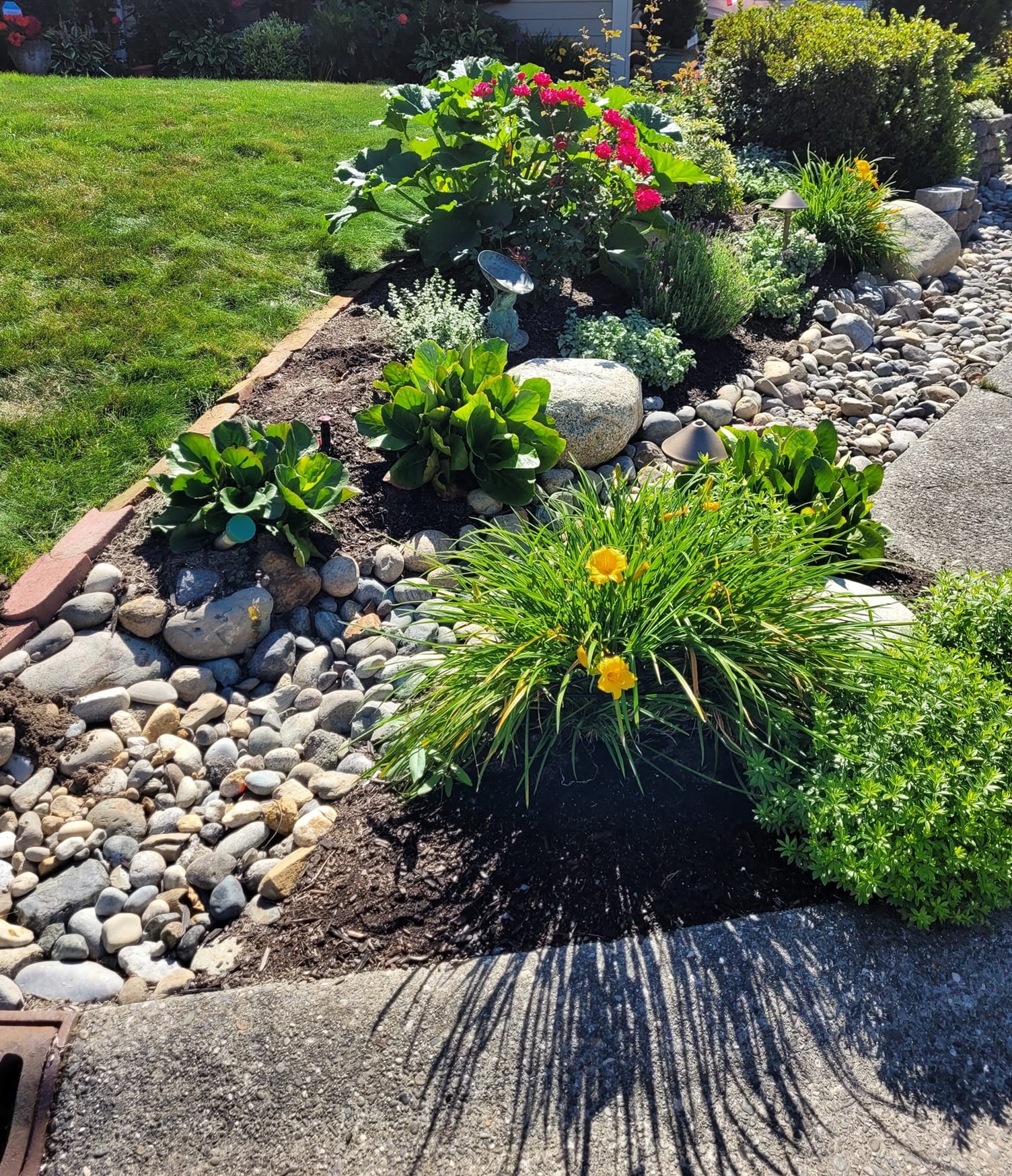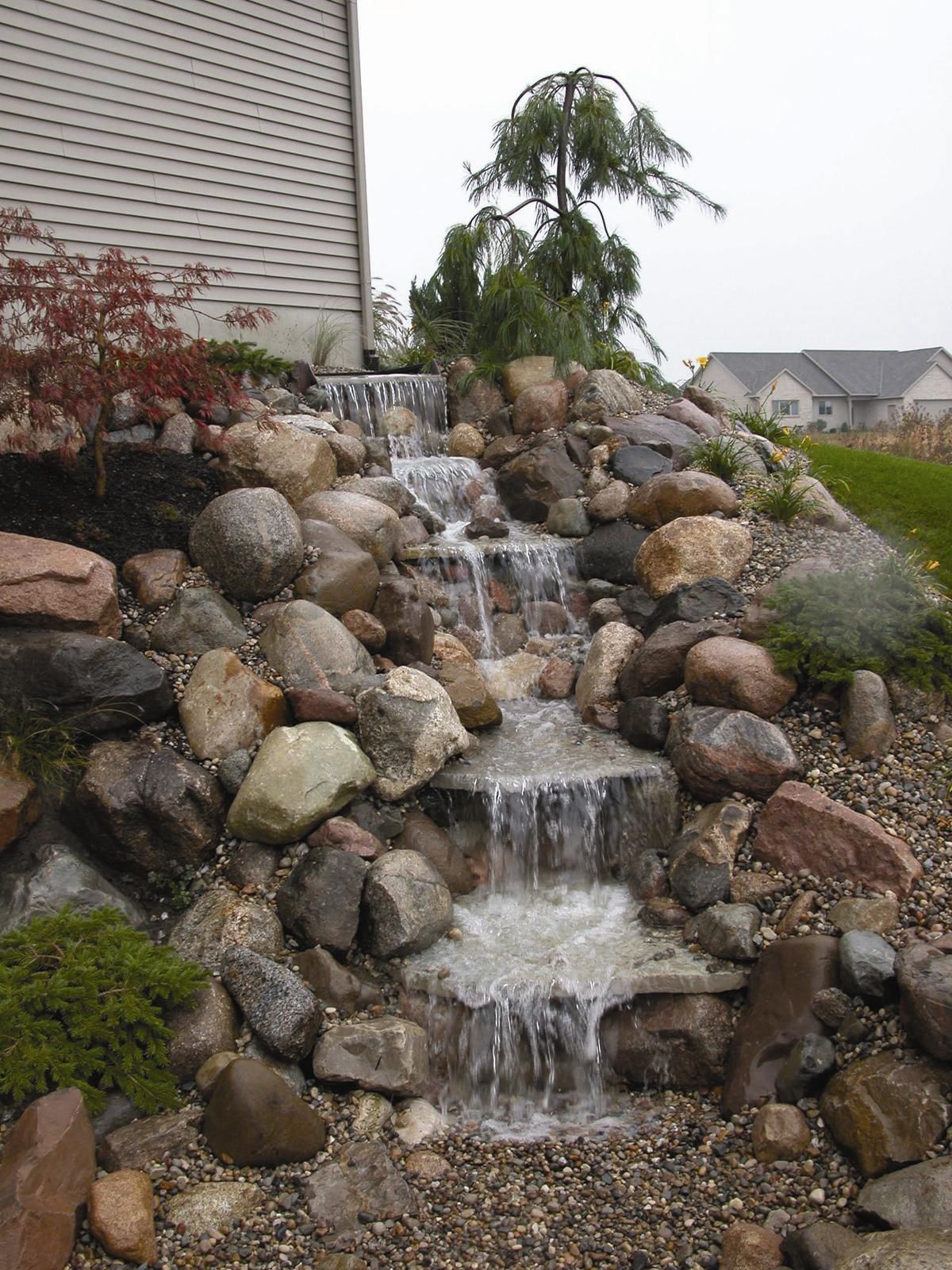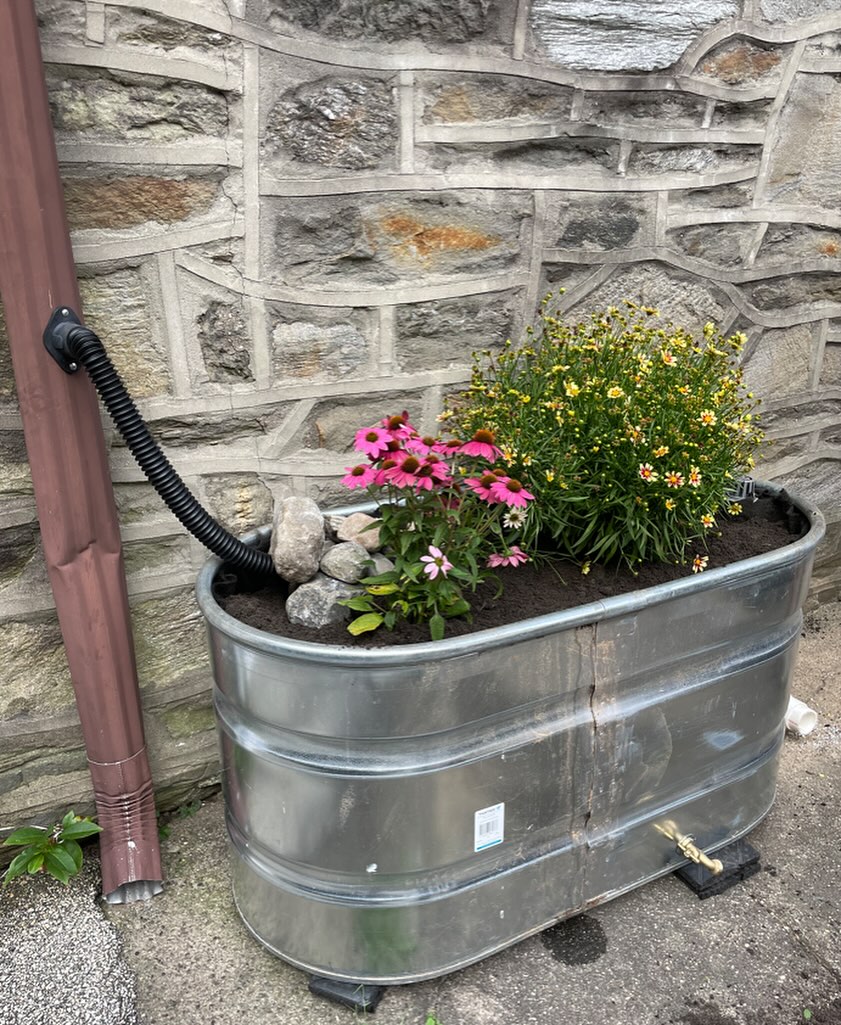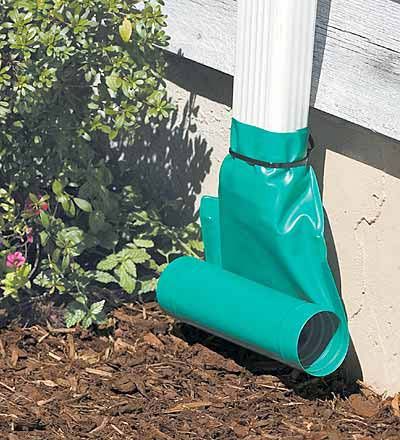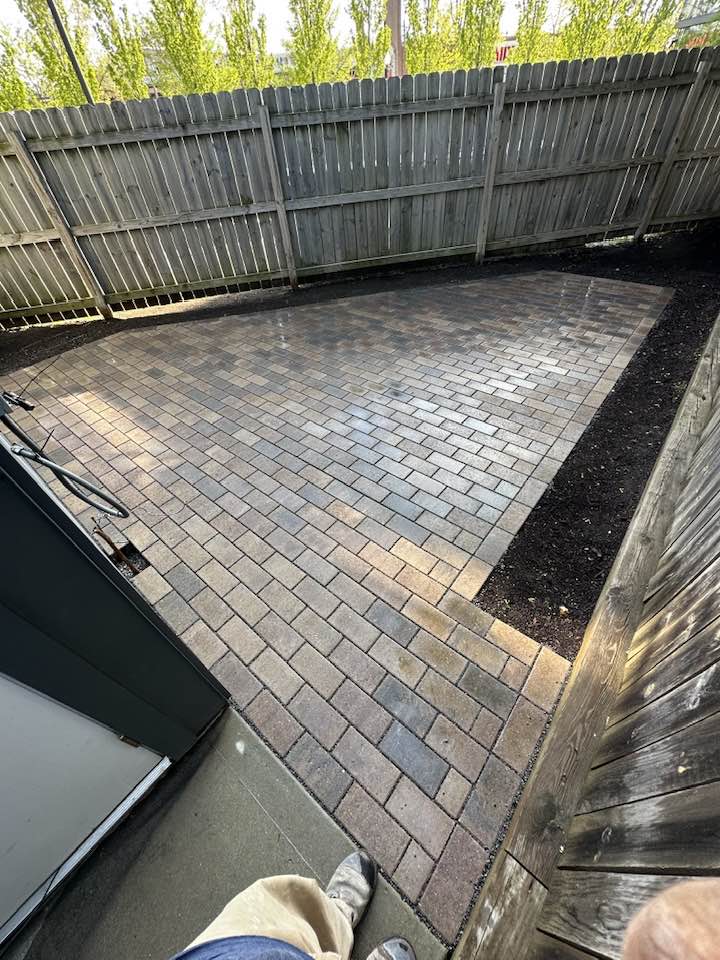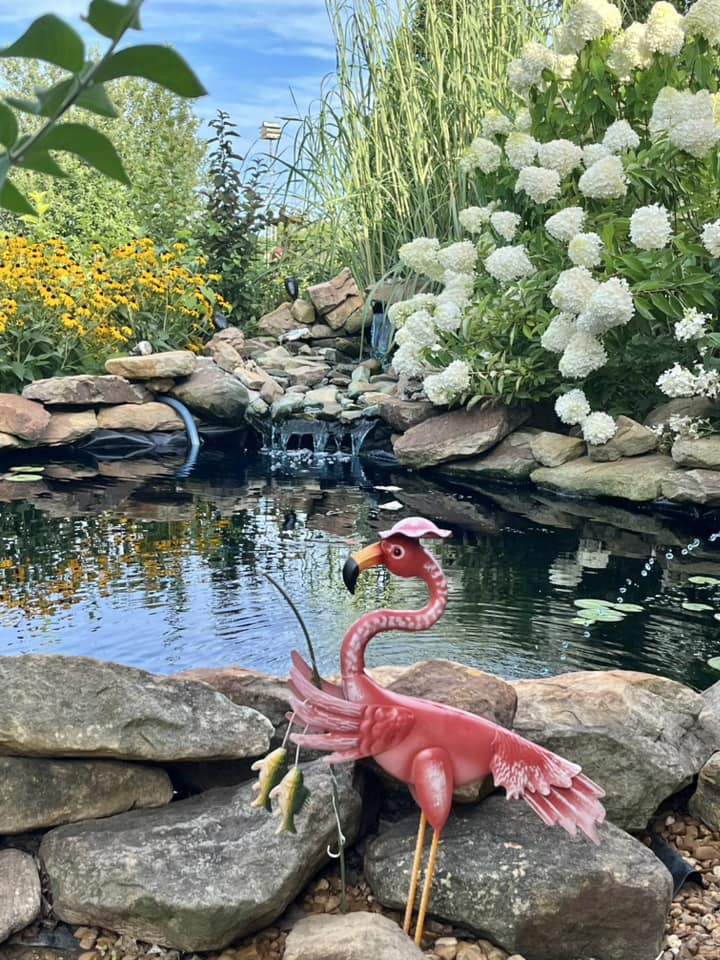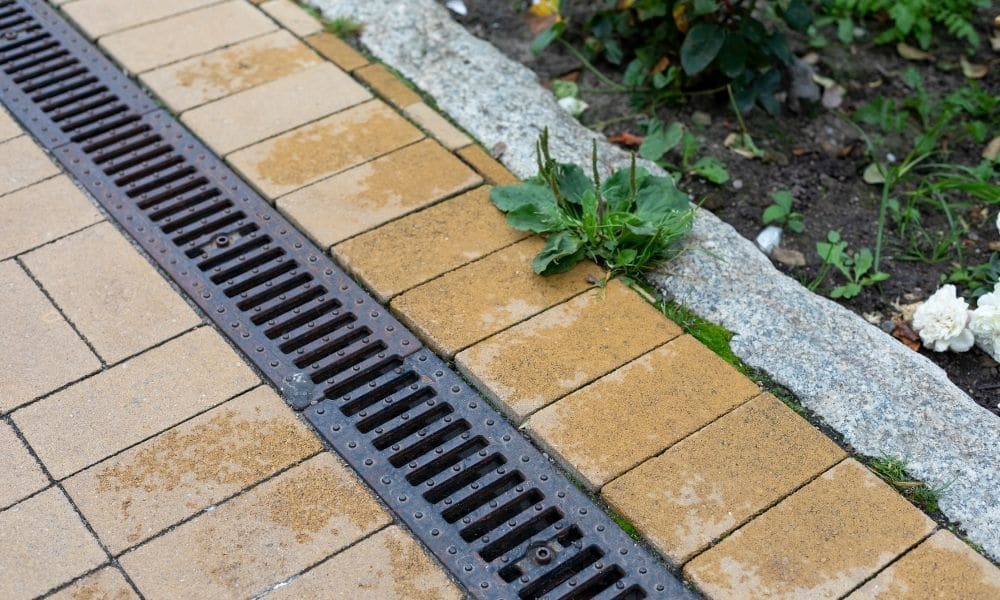Where you direct rainwater after hitting your roof can either be good or bad for your house’s foundation, landscaping, and overall aesthetic appeal. For this reason, downspouts, while often underestimated and overlooked, are essential.
Downspout drainage systems come in various designs, some simple and arguably boring, while others are stylish and even artistic. There’s a downspout drainage system that suits your property, whether you are aiming for a simple, low-maintenance solution or a visually striking feature to add some flair to your home’s exterior.
18 Best Downspout Drainage Ideas
In that case, let’s explore 18 downspout drainage ideas to handle your roof runoff.
1. French Drain
A French drain is a smart solution if you want to direct rainwater away from your house’s foundation. This system features a perforated pipe and gravel-filled sloped trench. Since a French drain is installed underground, it provides a clean aesthetic.
French drains are also long-lasting and help prevent soil erosion. However, the installation will cost you a pretty penny and is labor-intensive. Moreover, you may need to seek professional installation.
Related Posts:
2. Rain Chain
If you desire both style and functionality, consider installing a rain chain instead of the traditional downspout. Rain chains channel rainwater from the gutter to the ground via a vertical series of cups or links. As the water flows down, it creates a stunning water feature with a calming, trickling sound.
A rain chain is an excellent solution for a low-to-moderate rainfall climate.
3. Rain Barrel
Rainwater harvesting systems don’t have to be complex or expensive. On the contrary, it can be as simple as connecting a rain barrel to a downspout. When it rains, the water is directed through the spout to the barrel for storage. You can use this water for household needs or even the garden.
Rain barrels come in different shapes and sizes. Rain barrels lower stormwater runoff and conserve water.
4. Splash Blocks
Protect your house’s foundation by redirecting water from the downspouts away with splash blocks. You can choose a basic or a decorative splash block. When installing a splash block, angle it slightly downward and ensure it slopes away from your house.
Also, put it on a level ground to prevent water pooling. A splash block is easy to install, making it an inexpensive and practical solution.
5. Rain Gardens
You can design a beautiful rain garden to manage stormwater runoff. The water flows through the downspouts to the rain garden, then is absorbed by the plants. Besides collecting water from the downspouts, you can strategically place a rain garden to collect water from the driveway, roof, and any other hard surface.
Combine flowering and foliage plants in your rain garden to make it both functional and aesthetically pleasing.
6. Swales
A swale refers to a shallow depression or ditch made to slow down, collect, and redirect rainwater runoff. It is an eco-friendly and clever way to manage water flow while also beautifying your outdoors. You can flank your drainage swale with plants to enhance your curb appeal, reduce erosion, and stabilize the soil.
A swale suits you if you have sloping terrain or water from downspouts pool or erode your yard.
7. Dry Well
This idea allows you to collect water from a downspout and disperse it into an underground water storage tank or well. A dry well is an excellent solution if your area receives heavy rainfall or your property is prone to flooding.
A dry well doesn’t impact your outdoor appearance and design because it is installed underground. A dry well ensures your home stays drier and safer.
8. Dry Creek Beds
Guide water from downspouts away from your home using a dry creek bed. This feature comprises lining a shallow trench with rocks or gravel. A dry creek bed stays dry during dry weather and comes to life when the rainy season comes.
A dry creek bed is both a drainage and landscape feature. Consider adding plants to it to make it more attractive.
9. Gutter Waterfall
This stylish feature turns rainwater from downspouts into a captivating display by channeling water down steps, stones, or cascading platforms. Water from a gutter waterfall is collected in various drainage zones, like a pond, dry creek bed, and rain garden.
With a gutter waterfall, you can turn a plain downspout into your outdoor’s beautiful focal point. The tricking water creates a soothing sound and also attracts pollinators and birds.
10. Downspout Planters
Place a planter box with plants beneath a downspout to manage stormwater and enhance your yard’s appearance. You can grow flowers, edible, ornamental, native, and pollinator-favorite plants in your downspout planters.
You can customize your downspout planter based on the available space, budget, and preferred style. You can buy pre-made downspout planters or make them yourself. This solution is budget-friendly, low maintenance, and durable.
11. Roll-Out Drain Sleeves
This innovative solution features connecting your downspouts with retractable hoses that automatically unroll when it rains. The extension extends several feet, directing runoff safely into a designated area, like the yard, garden, or drainage area.
The roll-out drain sleeve recoils back once the rain stops. The downside of this solution is that the drain sleeve might not extend if the rain is too light.
12. Permeable Pavers
Permeable pavers let water from downspouts soak into the ground rather than rushing or pooling on the surface. Install permeable pavers on areas around your downspouts, walkways, driveways, or patios. Permeable pavers are typically made of porous material like concrete, plastic grids, and stone.
Aside from reducing puddling, permeable pavers help recharge groundwater. You can customize your permeable pavers to suit your preferences.
13. Pop-Up Emitters
Pop-up emitters refer to a drain system designed to carry rainwater away from your house’s foundation. This solution entails connecting a flexible hose to the downspout, running it through a trench, and then attaching a pop-up emitter at the end.
When it rains, water flows through the flexible pipe and builds pressure, causing the emitter lid to lift, letting the water flow out. The lid drops back down when the water stops flowing.
14. Cistern System
Many drainage systems focus on channeling water away from the home, but that’s not always the case. A cistern system manages rainwater by collecting water from downspouts and storing it. A cistern is typically larger than a rain barrel.
You can have your cistern above or under-ground. Consider this solution, particularly if you live in a drought-prone area.
15. Small Pond
Turn your yard into a beautiful, serene retreat by creating a small pond that is replenished by water from a downspout. This solution helps you control the rainwater and makes your yard visually appealing. Consider adding natural stones around your pond as well as some plants to elevate the area’s aesthetics.
Make sure your small pond is at least 10 feet away from your home’s foundation to protect it from water damage.
16. Concrete Drainage Channel
A drainage system made with concrete is highly durable and withstands several elements, hence serving you for a long time. This permanent, low-maintenance solution helps you manage water from downspouts. Simply construct a concrete channel that guides water from the downspout away from your home.
When planning a concrete drainage channel, consider the current direction of water flow and your property’s layout.
17. Rigid Downspout Extensions
You can direct rainwater away from your home by attaching a fixed, straight extension to the downspout. Rigid downspout extensions are made from durable materials such as PVC, vinyl, and aluminum. This solution can effectively handle large volumes of water.
You can leave your rigid downspout extension above the surface or bury it for a clean, more permanent installation. While this is a no-fuss, low-maintenance solution, it’s a less flexible setup, and repositioning can be hard.
18. Trench Drains
Lastly, pair a trench drain with the downspout to collect and redirect water. Trench drains are well-suited for downspouts connected to hard surfaces such as sidewalks, patios, and driveways. When installing a trench drain, place the downspout’s end directly into the trench drain inlet.
Clean the grates of your trench drains regularly to avoid clogs. Moreover, flush it occasionally to remove any debris.
Final Remarks
Implementing one or more of the above downspout drainage ideas helps protect your home from water damage, helping maintain its structural integrity. It will also help enhance its curb appeal and even increase your property’s value. So, implement these ideas today for a beauti

Hey there, I’m Derek Schew, a writer for Lawnholic.com, where we cover everything and anything related to lawns. As someone who’s spent countless hours tending to my own lawn, I’m passionate about sharing my knowledge and helping others achieve the perfect yard. From lawn care tips to product reviews, I’m committed to providing our readers with the most accurate and up-to-date information available. So whether you’re a seasoned lawn enthusiast or just getting started, I invite you to join our community and discover the joys of a lush, green lawn.

